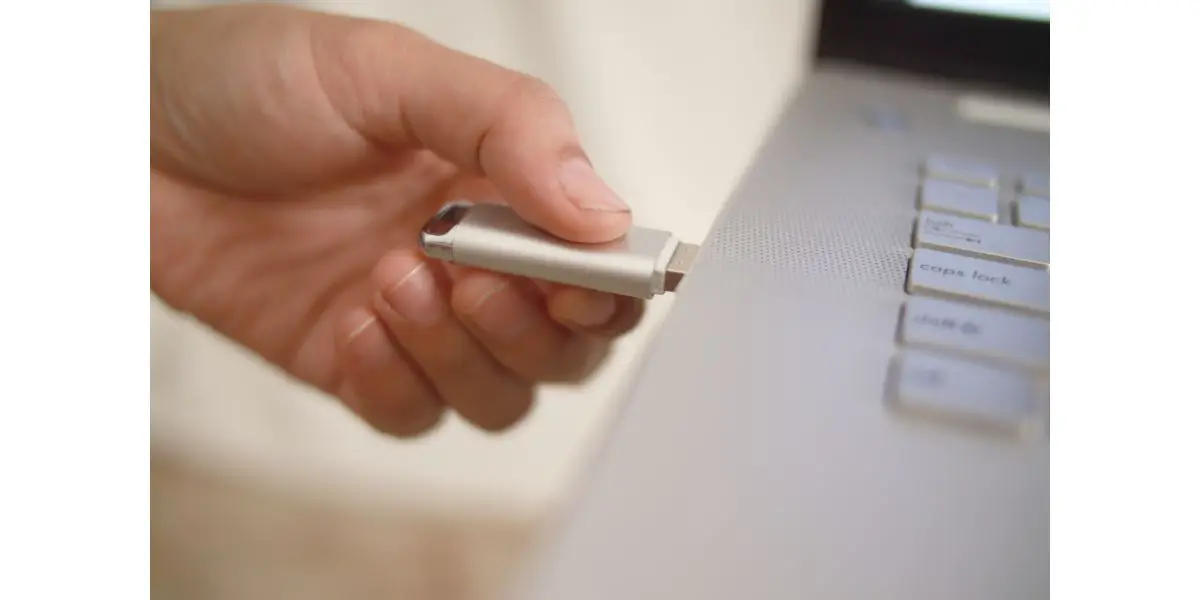Disclaimer: This post may contain affiliate links, meaning we get a small commission if you make a purchase through our links, at no cost to you. For more information, please visit our Disclaimer Page.
So you’ve just unwrapped your shiny new USB flash drive and plugged it into your computer, only to realize that a good chunk of its advertised capacity seems to be missing. Surely there must be something wrong, right? Where did the remaining memory go?
Table of Contents
Is It Normal for Your Flash Drive To Have Less Space Than Advertised?
It’s completely normal for your flash drive to have less space than advertised. This happens because of discrepancies in how disk and computer manufacturers list storage capacities. The former work with a decimal system and a binary one.
Over the rest of this article, I’ll explain the two systems and show how they lead to significantly different headline numbers. We’ll also see other instances where a flash disk may not show its full capacity and look at remedies to these problems where applicable.
How Flash Drive Manufacturers List Disk Space
Most people familiar with computers are aware that disk space is measured in bits and bytes. A bit is the smallest unit of information: a single digit and 8 bits make up a byte.
However, bits and bytes are too small a measure to keep track of the vast amounts of storage used by most consumers these days. To list these figures, manufacturers refer to them using shorthand terms, such as kilobytes, megabytes, gigabytes, and terabytes.
According to the International System of Units, “kilo” refers to 10^3 or 1,000. So, a kilobyte (1 KB)= 1,000 bytes.
Similarly, a megabyte (1 MB) = 10^6 bytes or 1,000 KB, a gigabyte (1 GB) = 10^9 bytes or 1,000 MB, and a terabyte (1 TB) = 10^12 bytes or 1,000 GB.
These figures show that flash drive manufacturers calculate disk space using powers of ten. They follow a decimal system in arriving at the disk space numbers they advertise.
As we’ll see in the next section, computer manufacturers follow a slightly different measurement system to arrive at their disk space figures.
The discrepancy between the two systems leads to the mismatch between disk capacity figures advertised by flash drive makers and their reading by your computer’s software.
How Computer Manufacturers List Disk Space
Even people familiar with computers assume that manufacturers use the same system for measuring disk capacity that disk manufacturers do. They’re wrong.
All conventional computers today are built around binary systems. So, when computer manufacturers measure disk space, they do so using powers of 2.
When people informally refer to 2^10 bytes = 1,024 bytes as a kilobyte or KB, they ignore the 24 excess bytes the measure contains compared to the traditional KB = 10^3 = 1,000 bytes.
While this might seem like a minor error, the numbers appear larger over large quantities of data.
Reacting to the contradiction, in 1998, the International Electrotechnical Commission introduced the terms kibibyte (KiB), mebibyte (MiB), gibibyte (GiB), and tebibyte (TiB) to refer to 2^10, 2^20, 2^30, and 2^40 bytes respectively.
Strictly speaking, computer and flash drive manufacturers measure disk space using different number systems. Where computer manufacturers refer to KB, MB, and GB, they should more accurately refer to KiB, MiB, and GiB.
The difference between the two measuring systems leads to discrepancies between the disk space numbers announced by flash drive manufacturers and the numbers read on your computer.
While Windows machines continue to operate this way, not all Apple systems do. Since OS X 10.6., Apple computers have shifted to using the same decimal system flash drive manufacturers do. So if you are using a newer macOS, any missing space on your flash drive is not due to this difference in measurement.
The Difference in How the Two Measuring Systems Work
Now that we’ve looked at how data size and disk space are calculated, let’s discuss the implications of measuring two different ways.
See the table below for an idea of how much of a difference measuring storage space using different systems can make. It lists disk space using the two measuring systems and traces the difference between the headline figures as the volume of data rises.
| MEASURE 1 | MEASURE 2 | MEASURE 1 – MEASURE 2 | % DIFFERENCE (Rounded off to nearest whole number) |
|---|---|---|---|
| KB = 10^3 = 1,000 | KiB = 2 ^10 = 1,024 | -24 | -2% |
| MB = 10^6 = 1,000,000 | MiB = 2 ^20 = 1,048,576 | -48,576 | -5% |
| GB = 10^9 = 1,000,000,000 | GiB = 2 ^30 = 1,073,741,824 | -73,741,824 | -7% |
| TB = 10^12 = 1,000,000,000,000 | TiB = 2 ^40 = 1,099,511,627,776 | -99,511,627,776 | -9% |
As you can see, the difference in capacity measured using decimal and binary systems increases with the volume of data involved. A kilobyte is only 2% short of the number of bytes in a kibibyte, but a terabyte is 9% short of a tebibyte.
These differences can easily account for the gap between the disk space advertised by a manufacturer and the space visible on the same flash drive once it is plugged into your computer.
Such a gap is to be expected; it doesn’t mean something is wrong with either your flash drive or your computer.
However, there are a few more instances in which a flash drive may not show up all the space it is supposed to have. In many of these cases, the drive’s capacity can be increased unless it’s faulty.
Other Reasons a Flash Drive’s Disk Space May Not Show Up
Besides the different measuring systems used by flash drive and computer manufacturers, there are other reasons a flash drive may not show all of its disk space on your computer:
- Your device may be a bootable disk. Your flash drive may be loaded with Windows installation programs. In this case, you won’t be able to use the disk to store other information without first formatting the disk.
- It has multiple partitions. Like all storage solutions, a flash drive can be partitioned into different directories. If this has been done, your operating system may only recognize the first partition on the disk. Once again, you must reformat the disk to reclaim the missing space.
- It has unpartitioned disk space. When the disk was partitioned, some space may have been left unallocated. So even if your computer reads all the directories, it won’t detect the unallocated space. Again, formatting the disk is your best option to solve the problem.
- It has hidden files, partitions, or recovery space: A flash drive may also have hidden files, partitions, or recovery space. While formatting will remove all partitions and free up space, you’ll have to change individual system settings to address the other two problems.
- The disk has been improperly partitioned: When partitioning a drive, you or someone else may have partitioned it using the wrong file format system for your OS. As with many other issues, reformatting the drive is the only solution.
- It has been corrupted: A drive may have been corrupted by a virus or improper use, such as removing a plugged-in USB drive while data is still transferring.
If your device has not malfunctioned or been infected by a virus, and the missing storage space cannot be accounted for using the differences between the way drive and computer manufacturers measure disk space, formatting your drive may be the best way to reclaim the missing space.
However, formatting a disk will erase all the data stored on it. So remember to back up any critical information before formatting the drive.
If none of these solutions solve your problem, your drive may have malfunctioned or become corrupted.
There is no solution for a malfunctioned device. It needs to be replaced.
If you think your device may have been corrupted, please check out my article Why Does Your Flash Drive Keep Corrupting? It has a detailed explanation of why this might be happening and offers several practical solutions that you can try to solve the problem.
Final Thoughts
Flash drives have less space than advertised because of differences in how drive manufacturers and your computer’s software measure disk space. If the missing space can’t be attributed to these differences, chances are your drive has malfunctioned or gotten corrupted, has hidden files or partitions, or has been improperly partitioned.


